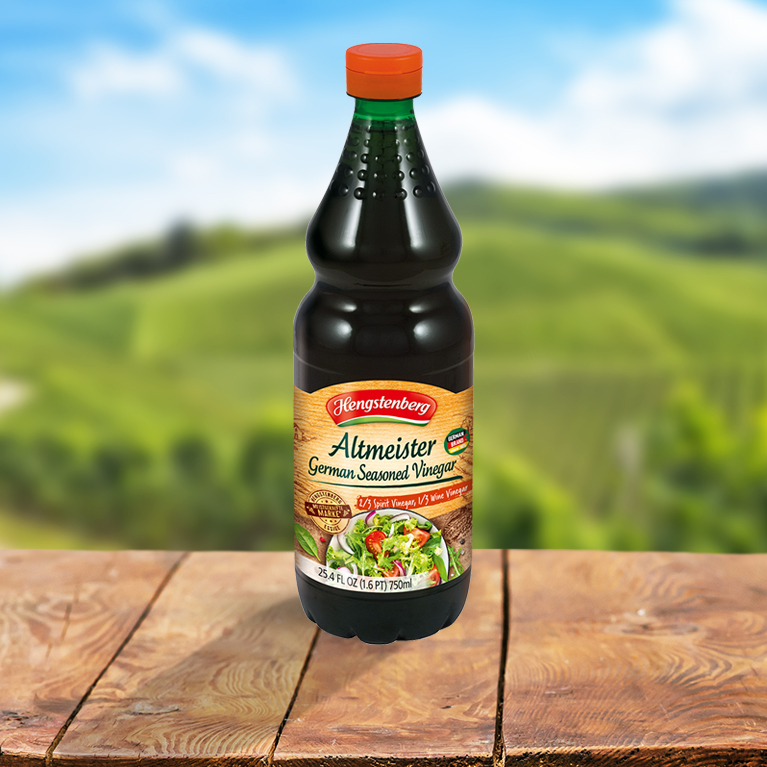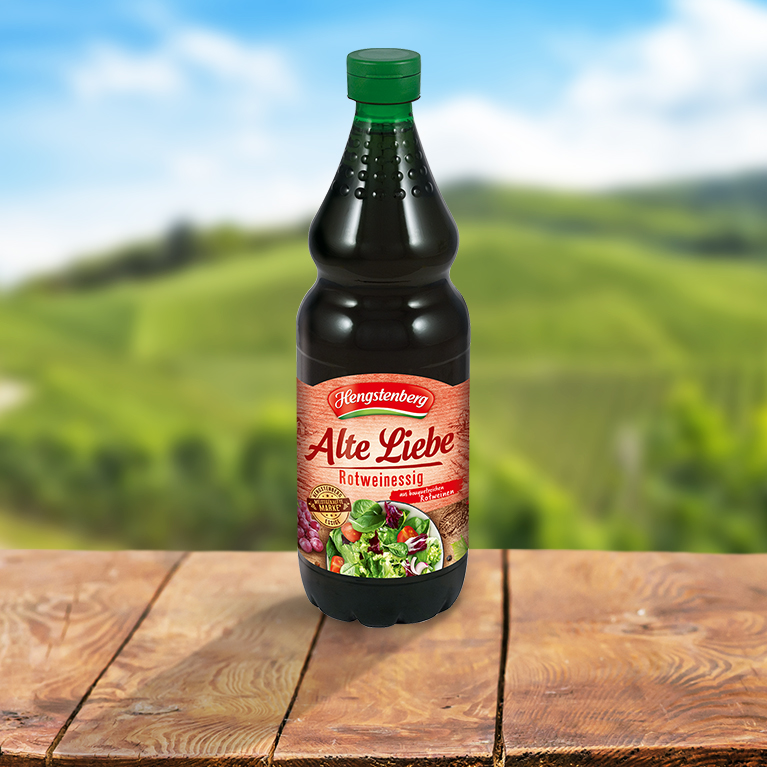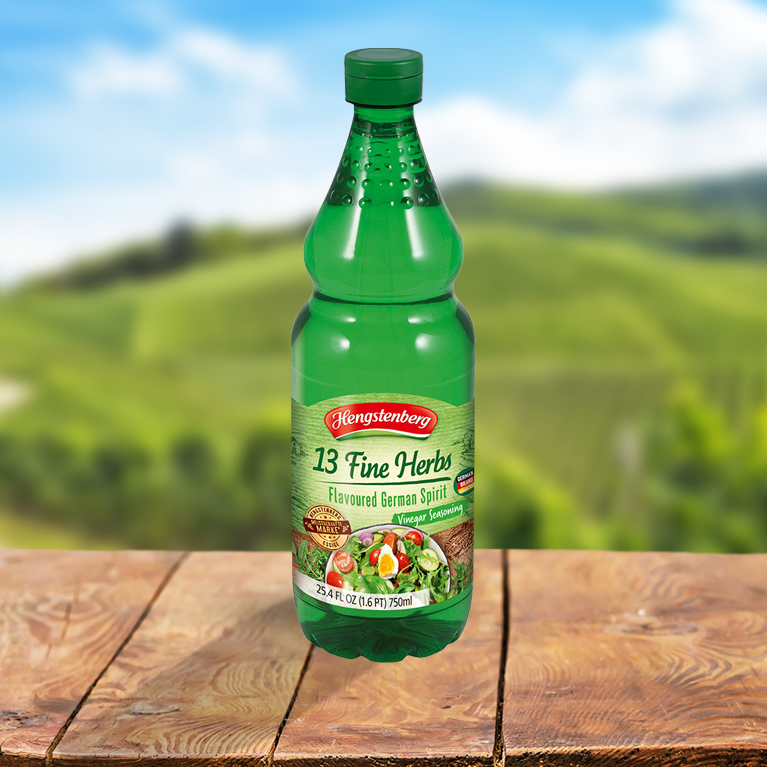Vinegar is a condiment that is produced by the fermentation of alcoholic liquids such as wine, spirit or fruit juices and vinegar bacteria. Thus, vinegar is nothing else than an acidic liquid for seasoning and preserving.
All about vinegar
Origin, tips and recipes
Vinegar is a true all-rounder and can be used in many ways. In this aricle, we'll tell you exactly what vinegar is, where it comes from, and how it's made. So get ready for a dose of vinegar expert knowledge!

What is vinegar?
The history of vinegar
The production of vinegar is one of the oldest food manufacturing processes. The ancient Egyptians and Chinese were already making vinegar around 5,000 years ago. At that time, wine and other alcoholic liquids were put into clay jugs and left to stand. The reaction of the airborne vinegar bacteria with the alcohol fermented the liquids and turned them into vinegar.


"The French word "Vinaigre" indicates the original production method, because it means "sour wine"

Different types of vinegar
Vinegar is not only versatile, but also very diverse in its variety. Whether spirit vinegar, wine vinegar, fruit vinegar or vinegar essence – you will find a suitable vinegar for every taste and every purpose. But what exactly are the differences between those vinegars? We explain it to you!

Fruit vinegar
As the name suggests, the basic product of fruit vinegar is a fruit. We use apples and raspberries for this. Fruit vinegars are popular to prepare mariands for fish, meat or to give salads a more fruity-sour note.
Spirit vinegar
The basis of spirit vinegar is sugar beet, grain or potatoes. A characteristic feature of spirit vinegar is its high acid content. Spirit vinegar is ideal for refining salad dressings or for pickling vegetables.
Balsamic vinegars
Balsamic vinegars originate from the Mediterranean cuisine. Aceto Balsamico di Modena is a specialty from the Modena region in northern Italy. The special feature of balsamic vinegar is the years of storage of the grape must in wooden barrels, which gives them their particularly mild and aromatic flavour.
Herbal vinegars
Herbal vinegars are produced from pure wine vinegar, spirit vinegar or a mixture of both. The vinegar is refined with herbs such as tarragon, lemon balm or dill. These vinegars are stored for a longer period before bottling and thus get a balanced, finely herbal taste, which makes them a perfect seasoning component.
Wine vinegar
Wine vinegar is made from red, white or rosé wine and has an acidity of 6 %. It has the typical aroma of southern wines and is therefore considered a specialty for fine cuisine. In French cuisine for example, white wine vinegar is the basis for sauce vinaigrette.
Frequently asked questions about vinegar
Why does our vinegar not have a best before date?
There is no indication of a best before date on the packaging of our vinegar products. This is because the BBD is not legally required for this product group according to the European food law.
Why has the legislator decided this? Vinegar is preserved by heating immediately before bottling. The high content of acetic acid has an additional preserving effect. Therefore, vinegar can be stored almost indefinitely.
How much alcohol does vinegar contain?
In fact, a small amount of alcohol remains at the end of the production process. In 100 ml of vinegar, a residual amount of about 0.2 g of alcohol is left. A tablespoon of vinegar with about 15 ml of liquid thus contains about 0.03 g of alcohol.
What is vinegar used for?
Vinegar is very popular for refining and seasoning dishes. Moreover, it is also said to have a health-promoting effect by stimulating the metabolism and digestion.
In addition to its positive health effects, vinegar can also be used as a "beauty product". When diluted and applied to the skin, it is said to promote blood circulation.
Vinegar can also be used for cleaning. Thanks to its high acid level, vinegar essence is particularly recommended for this purpose.
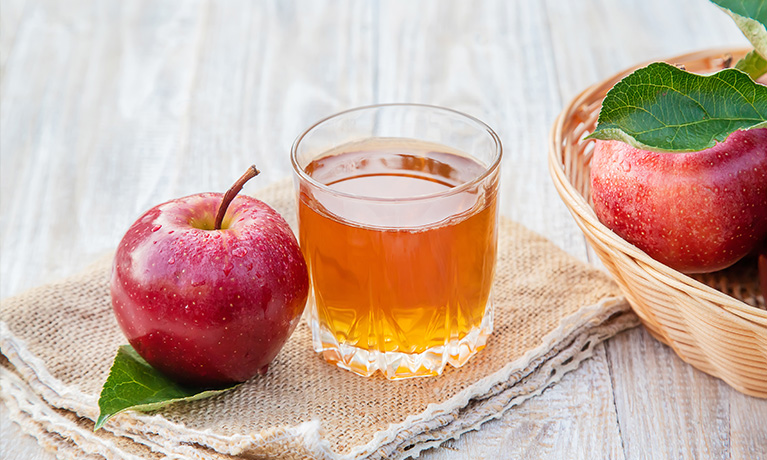


Make your own vinegar
You want to make vinegar yourself? Nothing easier than that! As a basic ingredient you can either use our white wine vinegar or our vinegar essence.
We show you how you can make herbal vinegar and fruit vinegar yourself.
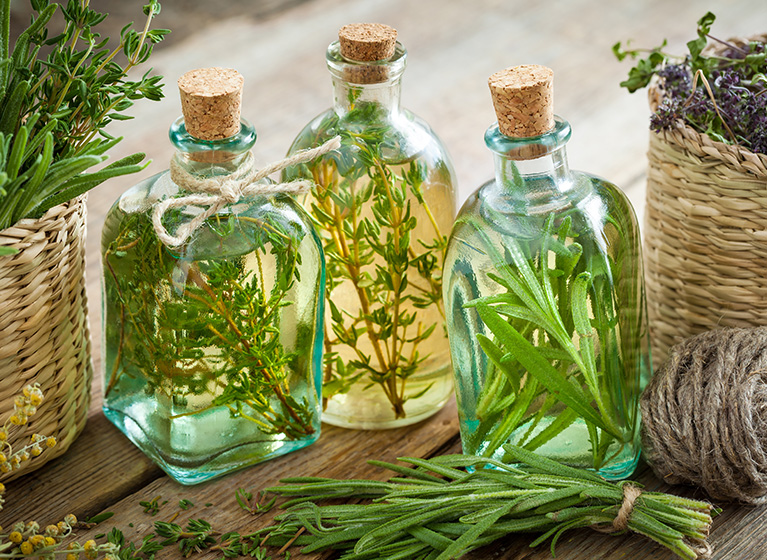
Make your own herbal vinegar
Before you can make your own herbal vinegar, you need herbs and seasonings of your choice - for example chili, garlic, peppercorns or ginger. First you need to wash and peel them, if necessary, and put them in a prepared bottle. Then fill the bottle with white wine vinegar or spirit vinegar. Close the bottle tightly and store it in a warm place for 2 weeks. Then pasteurise - and your herbal vinegar is ready!
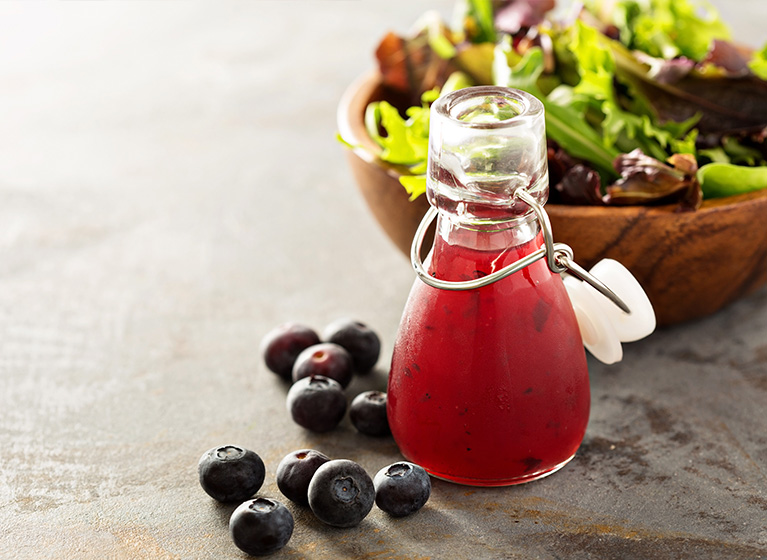
Make your own fruit vinegar
Are you more of a fruity type and looking for a fresh, tasty vinegar for the summer? No problem - fruit vinegar can also be made at home easily. You just need the fruit or berries of your choice and vinegar essence.
Put the washed berries in a container and pour vinegar essence over them. Make sure that the berries are completely covered. Then store the container in a warm, dark place for about 4 weeks.
After four weeks you can strain the liquid and squeeze the berries properly. If you have used vinegar essence, you should then dilute the mixture with water. The mixture should consist of ¼ essence and ¾ water. Fill the finished mixture into bottles and boil briefly.

More about the production of vinegar
More about the production of vinegarMore about the production of vinegar
More about the production of vinegar




